WebGL2 小贴士
本文收集了一些你在使用 WebGL 时可能遇到的、看起来太小而不值得单独写一篇文章的问题。
画布截屏
在浏览器中,实际上有两种函数可以对画布进行截图。
一种旧方法是:
canvas.toDataURL
另一种新的更好的方法是:
canvas.toBlob
所以你可能会认为,只需添加如下代码就能轻松截图:
<canvas id="c"></canvas>
+<button id="screenshot" type="button">Save...</button>
const elem = document.querySelector('#screenshot');
elem.addEventListener('click', () => {
canvas.toBlob((blob) => {
saveBlob(blob, `screencapture-${canvas.width}x${canvas.height}.png`);
});
});
const saveBlob = (function() {
const a = document.createElement('a');
document.body.appendChild(a);
a.style.display = 'none';
return function saveData(blob, fileName) {
const url = window.URL.createObjectURL(blob);
a.href = url;
a.download = fileName;
a.click();
};
}());
这是来自动画那篇文章的示例,在其中加入了上面的代码,并添加了一些 CSS 来放置按钮。
当我尝试时,我得到了这样的截图。

是的,这是一个空白图像。
根据你的浏览器/操作系统,它可能对你有效,但通常情况下它是无法工作的。
问题在于,出于性能和兼容性的考虑,浏览器默认会在你绘制完后,清除 WebGL 画布的绘图缓冲区。
有三种解决方案。
-
在截图之前调用渲染代码
我们使用的代码是一个
drawScene函数。
最好让这段代码不改变任何状态,这样我们就可以在截图时调用它来进行渲染。elem.addEventListener('click', () => { + drawScene(); canvas.toBlob((blob) => { saveBlob(blob, `screencapture-${canvas.width}x${canvas.height}.png`); }); }); -
在渲染循环中调用截图代码
在这种情况下,我们只需设置一个标志表示我们想要截图,然后在渲染循环中实际执行截图操作。
let needCapture = false; elem.addEventListener('click', () => { needCapture = true; });然后在我们的渲染循环中,也就是当前实现于
drawScene的函数中,在所有内容绘制完成之后的某个位置。function drawScene(time) { ... + if (needCapture) { + needCapture = false; + canvas.toBlob((blob) => { + saveBlob(blob, `screencapture-${canvas.width}x${canvas.height}.png`); + }); + } ... } -
在创建 WebGL 上下文时,设置
preserveDrawingBuffer: trueconst gl = someCanvas.getContext('webgl2', {preserveDrawingBuffer: true});这会让 WebGL 在将画布与页面其他部分合成后不清除画布,但会阻止某些可能的优化。
我会选择上面的第 1 种方法。对于这个特定示例,我首先会把更新状态的代码部分与绘制的代码部分分离开。
var then = 0;
- requestAnimationFrame(drawScene);
+ requestAnimationFrame(renderLoop);
+ function renderLoop(now) {
+ // Convert to seconds
+ now *= 0.001;
+ // Subtract the previous time from the current time
+ var deltaTime = now - then;
+ // Remember the current time for the next frame.
+ then = now;
+
+ // Every frame increase the rotation a little.
+ rotation[1] += rotationSpeed * deltaTime;
+
+ drawScene();
+
+ // Call renderLoop again next frame
+ requestAnimationFrame(renderLoop);
+ }
// Draw the scene.
+ function drawScene() {
- function drawScene(now) {
- // Convert to seconds
- now *= 0.001;
- // Subtract the previous time from the current time
- var deltaTime = now - then;
- // Remember the current time for the next frame.
- then = now;
-
- // Every frame increase the rotation a little.
- rotation[1] += rotationSpeed * deltaTime;
webglUtils.resizeCanvasToDisplaySize(gl.canvas);
...
- // Call drawScene again next frame
- requestAnimationFrame(drawScene);
}
现在我们只需在截图之前调用 drawScene 即可
elem.addEventListener('click', () => {
+ drawScene();
canvas.toBlob((blob) => {
saveBlob(blob, `screencapture-${canvas.width}x${canvas.height}.png`);
});
});
现在它应该可以正常工作了。
如果你实际检查捕获的图像,会看到背景是透明的。
详情请参见这篇文章。
防止画布被清除
假设你想让用户用一个动画对象进行绘画。
在创建 WebGL 上下文时,需要传入 preserveDrawingBuffer: true。
这可以防止浏览器清除画布。
采用动画那篇文章中的最后一个示例
var canvas = document.querySelector("#canvas");
-var gl = canvas.getContext("webgl2");
+var gl = canvas.getContext("webgl2", {preserveDrawingBuffer: true});
并修改对 gl.clear 的调用,使其只清除深度缓冲区。
-// Clear the canvas.
-gl.clear(gl.COLOR_BUFFER_BIT | gl.DEPTH_BUFFER_BIT);
+// Clear the depth buffer.
+gl.clear(gl.DEPTH_BUFFER_BIT);
注意,如果你真想做一个绘图程序,这不是一个解决方案,
因为每当我们改变画布的分辨率时,浏览器仍然会清除画布。
我们是根据显示尺寸来改变分辨率的。显示尺寸会在窗口大小改变时变化,
这可能发生在用户下载文件时,甚至在另一个标签页,浏览器添加状态栏时。
还包括用户旋转手机,浏览器从竖屏切换到横屏时。
如果你真的想做绘图程序,应该渲染到纹理。
获取键盘输入
如果你制作的是全页面/全屏的 WebGL 应用,那么你可以随意处理,
但通常你希望某个 canvas 只是页面的一部分,
并希望用户点击 canvas 时它能接收键盘输入。
不过 canvas 默认是无法获取键盘输入的。为了解决这个问题,
需要将 canvas 的 tabindex
设置为 0 或更大。例如:
<canvas tabindex="0"></canvas>
不过这会引发一个新问题。任何设置了 tabindex 的元素在获得焦点时都会被高亮显示。
为了解决这个问题,需要将其获得焦点时的 CSS 边框(outline)设置为 none。
canvas:focus {
outline:none;
}
为演示起见,这里有三个 canvas
<canvas id="c1"></canvas>
<canvas id="c2" tabindex="0"></canvas>
<canvas id="c3" tabindex="1"></canvas>
以及仅针对最后一个 canvas 的一些 CSS
#c3:focus {
outline: none;
}
让我们给所有 canvas 都附加相同的事件监听器
document.querySelectorAll('canvas').forEach((canvas) => {
const ctx = canvas.getContext('2d');
function draw(str) {
ctx.clearRect(0, 0, canvas.width, canvas.height);
ctx.textAlign = 'center';
ctx.textBaseline = 'middle';
ctx.fillText(str, canvas.width / 2, canvas.height / 2);
}
draw(canvas.id);
canvas.addEventListener('focus', () => {
draw('has focus press a key');
});
canvas.addEventListener('blur', () => {
draw('lost focus');
});
canvas.addEventListener('keydown', (e) => {
draw(`keyCode: ${e.keyCode}`);
});
});
注意,第一个 canvas 无法接受键盘输入。
第二个 canvas 可以,但它会被高亮显示。
第三个 canvas 同时应用了这两个解决方案。
将背景设为WebGL动画
一个常见问题是如何将WebGL动画设置为网页背景。
以下是两种最常用的实现方式:
- 将Canvas的CSS
position设置为fixed,如下所示:
#canvas {
position: fixed;
left: 0;
top: 0;
z-index: -1;
...
}
并将 z-index 设为 -1。
这种方案的一个小缺点是:你的 JavaScript 代码必须与页面其他部分兼容,如果页面比较复杂,就需要确保 WebGL 代码中的 JavaScript 不会与页面其他功能的 JavaScript 产生冲突。
- 使用
iframe
这正是本站首页采用的解决方案。
在您的网页中,只需插入一个iframe即可实现,例如:
<iframe id="background" src="background.html"></iframe>
<div>
Your content goes here.
</div>
接下来将这个iframe设置为全屏背景样式,本质上和我们之前设置canvas的代码相同——只是需要额外将 border 设为 none,因为iframe默认带有边框。具体实现如下:
#background {
position: fixed;
width: 100vw;
height: 100vh;
left: 0;
top: 0;
z-index: -1;
border: none;
pointer-events: none;
}